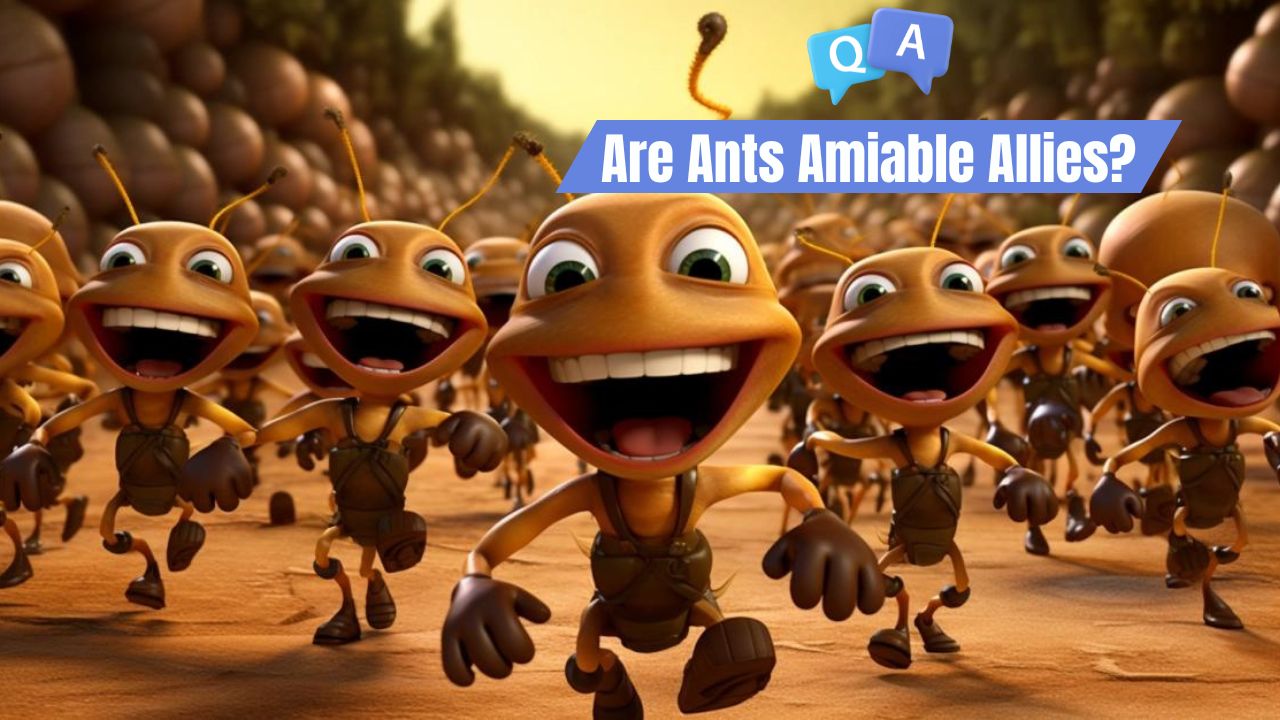TL;DR Summary
Ants’ behavior towards humans cannot be classified as ‘friendly’ in the conventional sense, as their interactions are primarily driven by instinctual behaviors rather than emotional connections. Ants exhibit a range of responses based on their survival needs, from curiosity in exploring new food sources to aggression when defending their colony. In some contexts, like agriculture, ants can be beneficial partners, aiding in pest control and soil health, while in urban settings, they are often seen as pests. Our relationship with ants is complex and multifaceted, encompassing both conflict and cooperation. While ants do not exhibit friendliness in the human sense, their presence in our world is significant, influencing ecosystems and prompting us to consider ethical and sustainable ways of coexisting with these tiny yet impactful creatures.
In the vast tapestry of life that adorns our planet, ants are among the most ubiquitous and influential inhabitants. These tiny architects shape ecosystems, influence human affairs, and captivate our imagination with their complex societies. I’m Professor Abigail Antenna, and I invite you to explore the fascinating relationship between ants and humans. Do ants exhibit behaviors that could be interpreted as ‘friendly’ towards humans? What significance does such a question hold for our understanding of these minute, yet mighty creatures?
Ants have marched across the Earth for millions of years, carving out an existence that runs parallel to our own. They forge paths through our gardens, make their homes within our homes, and play pivotal roles in the environments we share. But to what extent can these interactions be considered friendly?
Ants in the Human World
Ants are everywhere—on every continent except Antarctica, ironically. They thrive in rainforests and deserts, in rural areas and cities. Humans encounter ants daily, whether we are aware of it or not. They are in our parks and our pantries, our fields and our factories. This omnipresence makes ants significant players in our world, influencing our lives in countless, often overlooked ways.
What Does ‘Friendly’ Mean for an Ant?
To consider ants ‘friendly’, we must first contemplate what ‘friendly’ entails for a creature driven largely by instinct. Unlike pets that may seek affection, ants operate within a framework of survival and colony success. Friendliness in ants may not involve affectionate interactions but rather behaviors that indicate a harmonious coexistence with humans, or at least a lack of aggression or harm.
The Significance of Understanding Ant Behavior
Grasping the nature of ant behavior towards humans is more than an academic pursuit; it has practical implications. By understanding how ants perceive and react to us, we can better manage our shared spaces. Ants can be pests, partners in pollination, or indicators of ecological health, depending on the context. Their behavior towards us often reflects our impact on their world and, as such, offers a unique mirror into the environmental consequences of our actions.
As we delve into the world of ants and their interactions with humans, we seek to understand not just the behavioral dynamics at play but also the broader ecological and ethical implications. Join me in unraveling the complexities of this relationship, as we examine whether ants are friends, foes, or simply indifferent to the species that dominates the planet they too call home.
Historical Interactions Between Ants and Humans
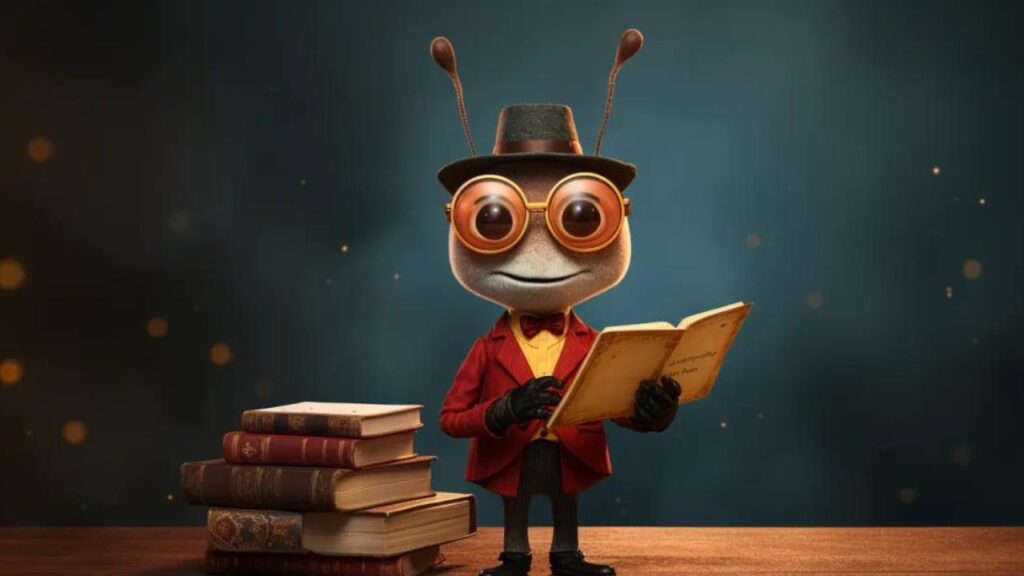
Throughout the annals of history, ants have played various roles in human life, from agriculture to urban cohabitation, and have even tiptoed into our cultural narratives. As a myrmecologist, I find the chronicles of human-ant interactions not only intriguing but also reflective of the broader ecological and societal shifts over time. The story of ants and humans is as old as agriculture itself, with these tiny creatures influencing our lives in both subtle and profound ways.
Ants in Agriculture
In the realm of agriculture, ants have been both venerated and vilified. Farmers have long observed the dual nature of ants: some species protect crops by preying on herbivorous insects, while others are pests, attacking the crops themselves or cultivating aphid herds that harm plants. The leafcutter ant, known for its defoliation of entire trees, presents challenges in some regions, yet in others, the same behaviors contribute to soil enrichment and the clearing of overgrown vegetation, demonstrating the complex relationship between ants and agricultural practices.
Ants in Urban Environments
As human civilization expanded into urban environments, ants adapted alongside us. They are now common urban dwellers, making their homes in the cracks of our sidewalks and the corners of our buildings. In cities, ants play a vital role in waste management, scavenging and breaking down organic matter. However, they can also become unwelcome inhabitants when they invade homes in search of food, leading to a conflicted relationship between ants and city dwellers.
Cultural Significance of Ants
Ants have marched into our folklore, our literature, and our languages. They are emblems of industriousness and teamwork, often cited as models of virtue in fables and parables across various cultures. In some societies, ants are seen as harbingers of weather changes or omens of good fortune. The respect for ants is evident in the practices of indigenous tribes that have historically harnessed the medicinal properties of ant venom and the nutritional value of ants as food.
The historical interactions between ants and humans reveal a relationship that is multifaceted and ever-evolving. Ants challenge us as pests, assist us as ecological partners, and inspire us with their industrious nature and complex societies. This dance between ant and human is not merely a biological or ecological interaction but a cultural exchange that has spanned millennia, reminding us of the indelible imprint these creatures have left on the human story.
Ant Behavior Around Humans
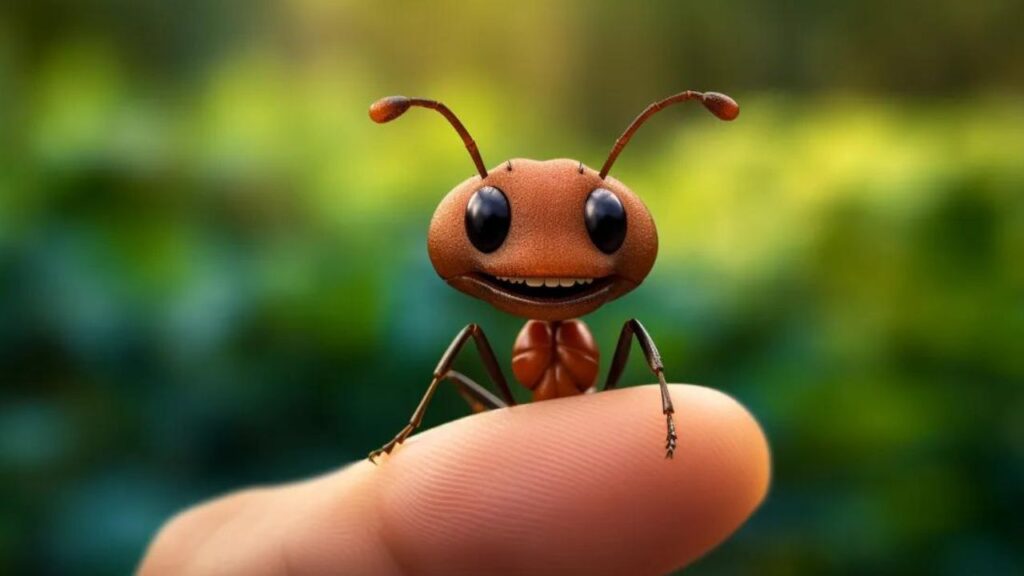
The behavior of ants around humans can vary from seemingly curious to outright aggressive, painting a complex picture of our interspecies dynamics. Observing these behaviors offers a window into how ants might perceive us, react to our presence, and in some instances, even benefit from our interaction.
Curiosity Versus Aggression
Ants, much like humans, display a range of behaviors when encountering something new or unfamiliar in their environment. While ants do not possess curiosity in the human sense, they do investigate novel objects or food sources, which can be perceived as a form of curiosity. This investigative behavior is crucial for their survival, leading them to new resources. Conversely, ants may also display aggression, particularly if they perceive a threat to their colony. This can be observed when ants bite or sting humans who come too close to their nest, a defensive behavior that is critical for their colony’s protection.
Ants’ Reactions to Human Presence
The presence of humans can elicit various responses from ants. In natural settings, ants may avoid areas frequented by humans, altering their foraging paths or relocating their nests. However, in urban settings where interaction with humans is inevitable, some ant species have adapted to coexist with us, exploiting the food and shelter opportunities our habitats provide. The common pavement ant, for example, is known to thrive in the cracks of urban sidewalks, largely undisturbed by human activity.
Cases of Mutualism Between Ants and Humans
There are fascinating cases of mutualism between ants and humans where both parties benefit from the relationship. In tropical regions, weavers and farmers have learned to utilize certain ant species as biological pest control agents. These ants protect crops by preying on agricultural pests, reducing the need for chemical pesticides. In return, the ants gain a consistent food source and habitat. Such mutualistic relationships underscore the potential for a harmonious coexistence between ants and humans, one that can be both environmentally sustainable and beneficial for agricultural productivity.
Ant behavior around humans is a testament to their adaptability and the diverse strategies they have evolved to navigate a world shared with us. Whether it’s a cautious investigation, a defensive stance, or a mutually beneficial interaction, ants continue to demonstrate their capacity to adjust to the human presence, often in ways that are surprisingly intricate and sometimes advantageous to both species.
Communication and Signals: Understanding Ant Responses

In the bustling world of ants, communication is the lifeblood that sustains their complex societies. This sophisticated signaling system is not only pivotal for their interaction with each other but also shapes their responses to the human world.
How Ants Communicate with Each Other
Ants are masters of chemical communication, utilizing a system of pheromones to convey detailed messages. These chemical signals can direct fellow ants to a newfound food source, signal an alarm, or even guide them back to the nest through a complex trail system. Beyond chemicals, ants also use tactile signals, such as antennal contact, and sound vibrations to convey information. This multifaceted communication network ensures that every member of the colony is informed and in sync with the collective needs and actions.
Interpreting Ant Behavior Towards Humans
Understanding ant behavior towards humans through the lens of their communication methods can be challenging. When ants encounter humans, they may react with what appears to be curiosity or aggression, but these behaviors are typically a form of chemical investigation or a defensive response to perceived threats. For instance, if ants quickly disperse when a human approaches, it may be due to alarm pheromones released by a scout ant. Conversely, if ants appear to ignore human presence, it may indicate that their chemical receptors have not identified the human as a significant threat or interest.
The Potential for Human-Ant Communication
The question of whether humans can communicate with ants is a fascinating one. While we cannot ‘speak ant’, some scientists and entomologists engage with ants by mimicking their pheromones or creating vibrations to influence ant behavior. Such experiments have had varying degrees of success, often altering ant behavior in predictable ways. This suggests that while direct communication may not be possible, there is potential for humans to interact with ants in a manner that influences their actions, potentially for purposes such as pest management or study.
Ant communication is a field rich with complexity and nuance. While our understanding of ant responses to humans is primarily based on observation and interpretation, it opens up intriguing possibilities for future interaction. As we continue to study ant signaling, we move closer to deciphering the subtleties of their interactions and developing new ways to coexist with these fascinating insects.
The Impact of Humans on Ant Populations

As we, humans, reshape the landscapes of our planet, the impact on ant populations becomes an important gauge of the health and balance of our ecosystems. My research often brings me to the front lines of this interaction, witnessing firsthand how human activity influences the lives of these industrious insects.
Habitat Disruption and Ant Colonies
The construction of buildings, roads, and agricultural expanses has led to significant habitat disruption for ant colonies. Urbanization often fragments the continuous space ants require, isolating colonies and limiting their access to resources. Pesticides and pollutants can decimate ant populations, altering their behavior and reproductive success. In my studies, I’ve observed how such disruptions can lead to decreased ant diversity and can upset the intricate balance of their colony structures and social dynamics.
The Role of Ants in Ecosystems Affected by Humans
Despite the challenges posed by human activity, ants continue to play a vital role in the ecosystems where they remain. In agricultural landscapes, ants can contribute to pest control and soil aeration, enhancing crop growth and health. In urban areas, ants assist in waste decomposition and serve as bioindicators of environmental quality. Understanding these roles is critical, as it highlights the importance of ants in maintaining ecological functions even in areas heavily influenced by human presence.
Conservation Efforts for Ant Species
The conservation of ant species has become a significant concern in my field. Efforts to protect ant populations often involve habitat restoration, the creation of biological corridors, and the reduction of pesticide use. In some regions, specific ant species are recognized for their ecological importance and are protected under environmental regulations. Conservationists are beginning to understand that protecting ants is not just about preserving individual species but also about maintaining the ecological services they provide, which are invaluable to human and environmental health.
The intersection of human activity with ant populations is a complex and critical area of study. It speaks to the broader narrative of our environmental footprint and the need to balance human advancement with the conservation of the natural world. Ants, as both beneficiaries and victims of our global presence, serve as a reminder that the smallest creatures often play the most significant roles in the health of our planet.
Ants as Pests Versus Partners
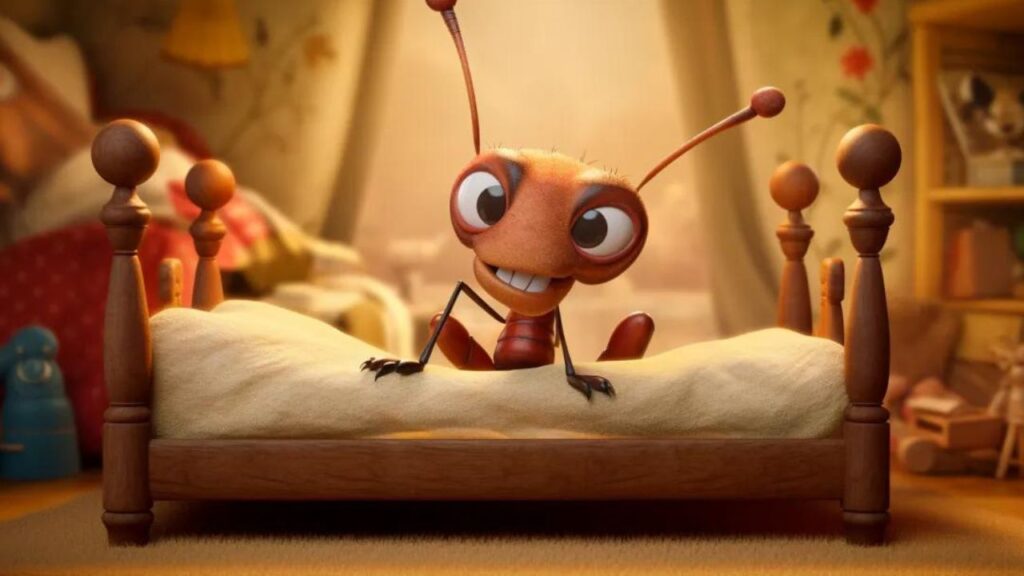
In the human domain, ants are often cast in the dual roles of pest and partner, their label depending on the context of our encounter with them. As a researcher, I have seen how these insects can be seen as unwelcome invaders or as invaluable allies, and understanding this dichotomy is crucial for fostering a more nuanced relationship with them.
Ants in the Home: Pest Control Perspectives
In the home, ants are often considered pests, unwelcome guests that invade our kitchens and undermine the integrity of our structures. From a pest control perspective, ants can be challenging to manage due to their sheer numbers and the hidden, subterranean nature of their nests. The goal of pest management is not just to eliminate ants but to understand and mitigate the conditions that invite them inside. This involves securing food sources, sealing entry points, and sometimes, when necessary, employing baits and repellents that target the colony without undue harm to the environment or non-target species.
The Benefits of Ants in Gardens and Farms
In gardens and farms, the story of ants is markedly different. Here, they can be crucial partners, pollinating plants, aerating the soil, and managing pests. My observations have shown that ants contribute to nutrient cycling and seed dispersal, enhancing plant growth and diversity. In organic farming, ants are often part of integrated pest management strategies, used as natural pest controllers that reduce the need for chemical insecticides.
Symbiotic Relationships and Their Advantages
Ants engage in various symbiotic relationships that offer mutual benefits to both parties. One of the most well-known is their relationship with aphids, where ants protect aphids in exchange for honeydew. Another example is the relationship between certain ant species and specific plant species, where ants receive shelter and food in exchange for their service as protectors against herbivores. These symbiotic relationships highlight the potential advantages of working with ant populations rather than against them.
The role of ants as pests or partners is highly context-dependent. In the home, they may be unwanted, but in gardens and ecosystems, their presence is often beneficial. The challenge lies in striking a balance, where we manage ant populations in our homes without undermining their positive roles in nature. As we deepen our understanding of ants and their behaviors, we can develop more effective strategies for living alongside them, harnessing their benefits, and mitigating their nuisances.
Research on Ant Perceptions of Humans
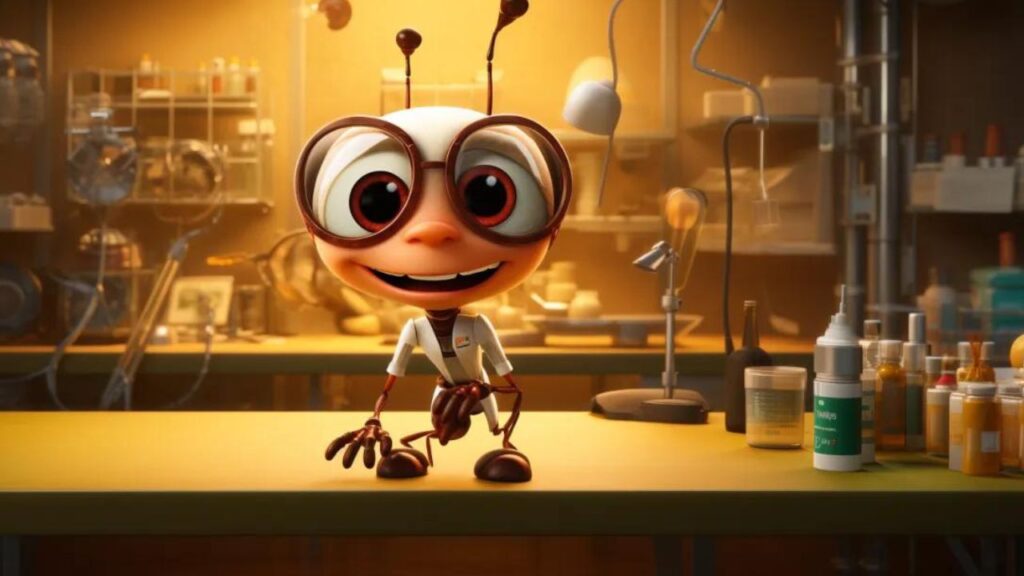
The cognitive world of ants has long intrigued scientists and naturalists alike. Recent research efforts have begun to unravel how ants perceive humans, probing the limits of their memory and learning capabilities. These studies not only shed light on ant cognition but also raise broader questions about the nature of insect intelligence.
Studies on Ants’ Ability to Recognize Humans
While ants do not possess the facial recognition abilities that some mammals display, recent studies have investigated their capacity to distinguish between individual humans based on chemical cues. In controlled experiments, researchers have observed that ants can become accustomed to the presence of specific researchers, exhibiting less aggressive behaviors over time. This suggests that while ants may not ‘recognize’ humans in the traditional sense, they can discern and remember the chemical profiles associated with different people.
Ant Memory and Human Interaction
Ants have demonstrated a remarkable capacity for memory, which plays a crucial role in their interactions with humans. Experiments have shown that ants can remember the location of food sources, the configuration of their environment, and potentially even the chemical signatures of individual humans they encounter regularly. This memory allows them to navigate complex landscapes altered by human activity and adjust their behaviors in response to human presence.
Learning from Ants: Insights into Insect Cognition
The learning abilities of ants offer a window into the broader field of insect cognition. By studying how ants adapt to changes in their environment, including those caused by humans, researchers have gained insights into the plasticity of ant behavior. Ants have been found to modify their foraging strategies, nest construction, and even their diurnal patterns in response to human-induced changes. This plasticity suggests a level of cognitive flexibility that is necessary for their survival in the ever-changing world they share with us.
Research into ant perceptions of humans is an emerging field that promises to deepen our understanding of these creatures and the potential for coexistence. As we continue to study their responses to our presence, we gain valuable insights into the adaptability and resilience of ants. These insights not only inform our approaches to pest management and conservation but also contribute to our broader understanding of animal cognition.
Philosophical and Ethical Considerations
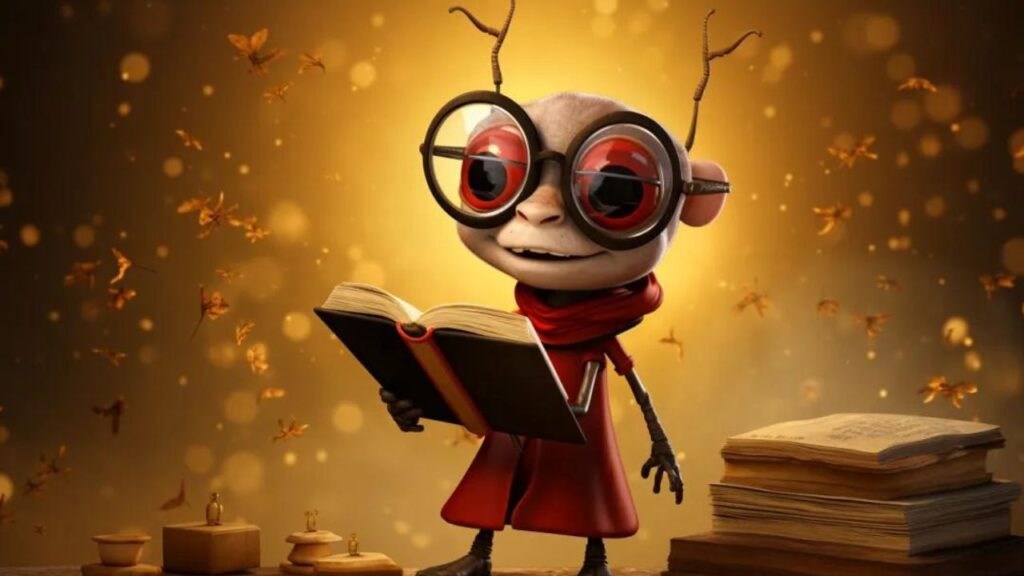
The intricate dance between humans and ants opens up profound philosophical and ethical questions. As a myrmecologist deeply rooted in the study of ant behavior, I find myself increasingly pondering the moral status of these insects and the ethical implications of our interactions with them.
The Moral Status of Insects
The question of the moral status of insects, ants included, has long been a subject of philosophical debate. Do ants, with their complex societies and sophisticated behaviors, deserve moral consideration? This question becomes particularly pressing in light of evidence suggesting ants can learn, adapt, and possibly even exhibit a primitive form of cognition. If ants are not merely automata driven by instinct but beings with a level of consciousness, then our moral framework must adapt to account for their wellbeing.
Ethical Implications of Interacting with Ants
Our interactions with ants, whether in pest control, research, or observation, carry ethical implications. In pest management, for instance, the use of chemicals that cause prolonged suffering to ants challenges us to consider more humane methods of control. In research, the cognitive abilities of ants should guide the care and consideration with which we study them, ensuring that their welfare is a priority. Ethical entomology is emerging as a field that seeks to reconcile human needs with the respect and kindness due to these industrious insects.
Future Directions for Human-Insect Relations
Looking towards the future, the way we relate to ants and other insects may evolve as our understanding of their cognitive and social capacities grows. As we recognize the vital role insects play in our ecosystems, there may be a shift towards conservation and symbiosis rather than control and eradication. Educational initiatives can help the public appreciate the value of ants, leading to more insect-friendly practices in agriculture, urban planning, and at home.
The philosophical and ethical considerations surrounding our interactions with ants are complex and multi-faceted. They challenge us to reconsider the significance we place on creatures based on size and complexity and to redefine our role and responsibilities within the natural world. As we deepen our understanding of ants, we must also reassess the ethical contours of our relationship with them, striving for a harmonious coexistence that honors their place in the tapestry of life.
Conclusion: The Complex Tapestry of Ant-Human Interactions

As we draw our exploration of the ant-human dynamic to a close, we are reminded of the intricate tapestry woven by these interactions. Each thread represents a behavior, a reaction, a shared moment in time between our species and theirs. It is a relationship characterized by both conflict and cooperation, shaping not only the lives of ants but the environments we share.
Summarizing Ant Behavior Toward Humans
Ant behavior towards humans is as varied as the species themselves. From the curious antenna tap of a lone explorer to the collective mobilization of a colony under threat, ants exhibit a range of responses to our presence. They adapt to the urban landscapes we build, exploit the resources we waste, and sometimes suffer under the environmental pressures we impose. Their behaviors, whether perceived as aggressive or indifferent, are reflections of their survival instincts in a world dominated by human influence.
The Broader Context of Our Relationship with Ants
Our relationship with ants extends beyond the immediate annoyance of an invaded kitchen or the appreciation of their soil-aerating benefits in our gardens. It touches on fundamental questions about our role in nature and our responsibility towards the smaller denizens of our planet. The ways in which we interact with ants—be it through the mindful avoidance of pesticides or the creation of green spaces that cater to their needs—speak volumes about our broader environmental ethos.
Reflecting on Coexistence with the Tiny Inhabitants of Our Planet
In contemplating our coexistence with ants, we are called to reflect on a cohabitation that is sustainable and respectful. Recognizing the ecological significance of ants prompts us to consider more deeply how we might live in harmony with them. It is a call to balance: to protect our homes and food, yes, but also to safeguard the lives and habitats of these industrious insects. As we move forward, it is my hope that we can cultivate a relationship with ants that is informed by understanding, guided by respect, and enriched by the wonder of sharing our space with these fascinating creatures.
The complex tapestry of ant-human interactions is a microcosm of the larger environmental challenges we face. In understanding these interactions, we learn not only about ants but also about ourselves and the imprint we leave on the natural world. It is a relationship worth examining, worth nurturing, and ultimately, worth celebrating as we journey together on this planet we call home.

